How To
How to improve Skyrim combat without mods
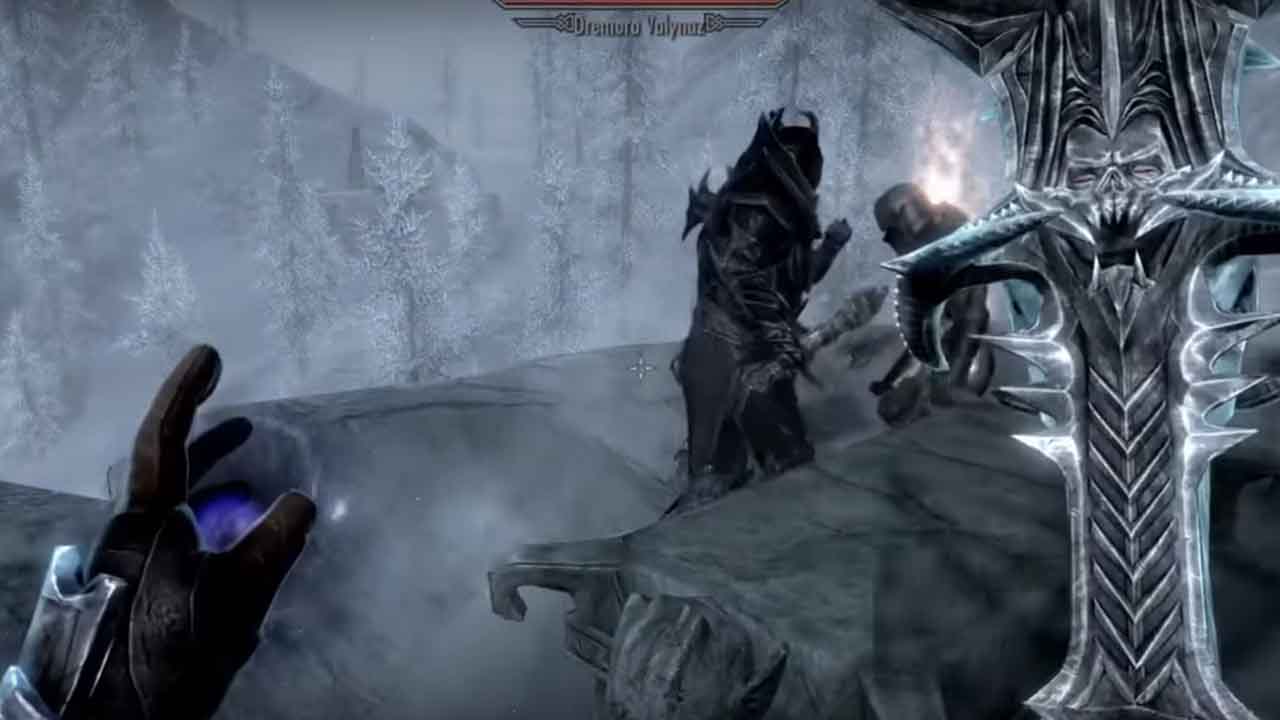
- July 29, 2019
- Updated: July 2, 2025 at 4:37 AM


Skyrim is not a very friendly place. There’s scheming vampire lords, vicious bears that will maul you to pieces, a civil war raging across the land, werewolves, and of course the looming threat that a dragon could swoop down and barbecue you just because he’s bored. Suffice it to say that combat is a huge cornerstone of Elder Scrolls V, and eight years after the game’s original release, it’s starting to feel a bit stale. If you look around, though, there are actually a number of ways to revitalize battle in Skyrim:
There are plenty of mods to improve Skyrim’s visuals, restore cut content, fix bugs, or make new dungeons, homes, and followers. However, exploring all these new crypts and caves is still going to feel tiresome if your fighting is restricted to what Bethesda offered back in 2011, and one of the largest contributing factors to that lack of spice is that at higher levels you’re likely not changing your style, armor, weapons, or appearances anymore, and your offensive spells cap at a certain damage.
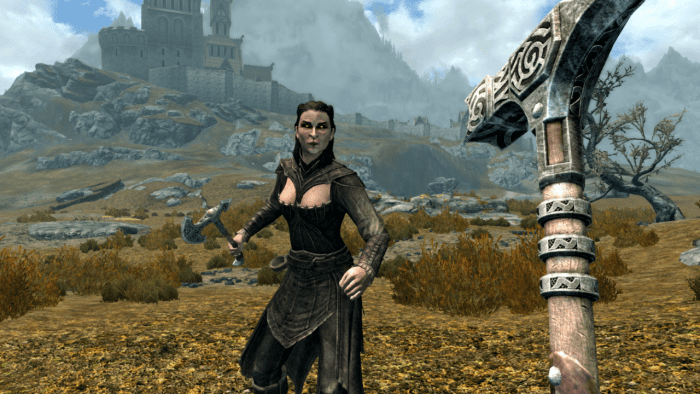
There is a “best weapon” in Skyrim
Whether you’re an Orc wielding a greatsword, a Wood Elf aiming with a bow, or a Redguard dual-wielding axes, the problem with late-game martial characters is that once you’ve smithed a set of Daedric armor or forged a Dragonbone dagger you have zero reasons to go back to steel, Elven, or bonemold. That means that in order to maximize your defense score you’ll donning the same weapons and armor. Every time. Why would you not?

The same goes for perks – if you’re a pure mage class, all you’ve really got for combat is the frost, fire, and shock spells of the Destruction tree. Once you buy the most damaging spell (Incinerate, Thunderbolt, or Icy Spear), Dual Casting, and a couple of perks to buff the damage (Augmented Flames, Frost, or Shock) you’ve reached your damage cap and probably won’t be casting the weaker versions of these spells ever again. By your second or third mage playthrough, you’ll probably be tired of them. The same goes for that Orc with a greatsword – you’re probably going to sink the same three points into the stacking Deep Wounds perk.

1. There is no best weapon in Skyrim
Remember when we said there was the best weapon in Skyrim? Statistically speaking, this is true. Here’s the flip side: Different weapons and spells serve a different purpose. Even if you just play a one-handed specialist there’s still some variation you can get by using different types of one-handed weapons. Don’t just stick with the sword because that’s the most damaging weapon you’ve found. There’s a use for each one:
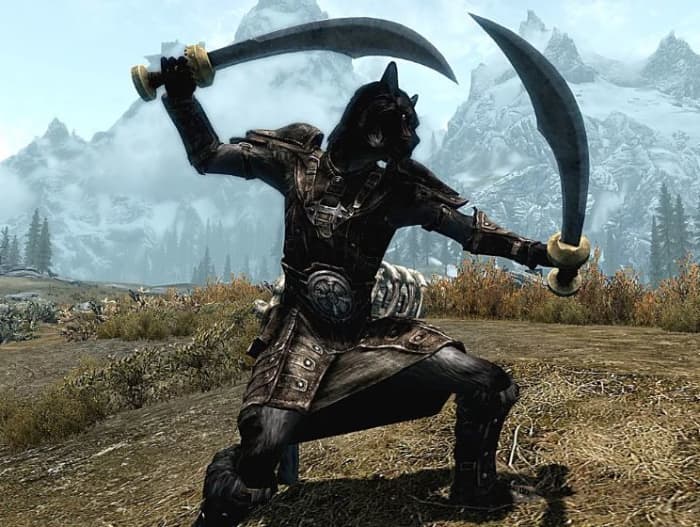
Sword
Swords have a (10%-20%) chance to deal critical damage to targets, eventually boosting up to +50% crit damage. Since swords also boast a higher swing speed than axes and maces, that means you’re going for multiple fast strikes with the chance that one of them will score a critical. Dual-wielding (or using the dual-wielding exploit with a sword and dagger) doubles your chances even more. Try enchanting your blades with this in mind for a plethora of clever combinations.
Dagger
If faster swings per second make you happy, then daggers are your best bet. While they’ll always deal less damage than a sword, ax, or mace, if you properly smith or enchant it, it can hold its own, particularly if the enchantment does high damage. Appropriately, the dagger is also a great weapon of choice for the rogue classes; get the Assassin’s Blade perk and performing a sneak attack with a dagger will deal 15x the damage!
Ax
Axes are the awkward middle child of the martial weapons family, swinging slower than swords and daggers, and dealing less damage than maces. What’s the draw, then? Axes deal bleed damage, which is likely the most underrated, undervalued damage type in the game. Bleed effects cannot be absorbed or resisted in any way, and every rank of the respective perks will bump the magnitude and duration of bleeding damage dealt by weapons (the material of which is another factor). Bleed does DPS, and the effects stack with other DPS implements in the game, such as poison, fire, or Absorb Health. If you’re good at enchanting or concocting poisons, the ax can be a formidable weapon indeed.
Mace/hammer
Last but not least, you’ve got the blunt weapons – the martial bad boys; the heavy hitters of Skyrim. While they’re slower to hit with, these massive bludgeon tools always deal more damage than any other weapon in an even encounter. Better still, they can ignore 25%-75% of armor, cutting right through whatever damage resistance your enemy has. This makes a warhammer a deadly tool against bandit chiefs, Falmer warmongers, Dwemer automatons, or any armored foe who dares step in your way.
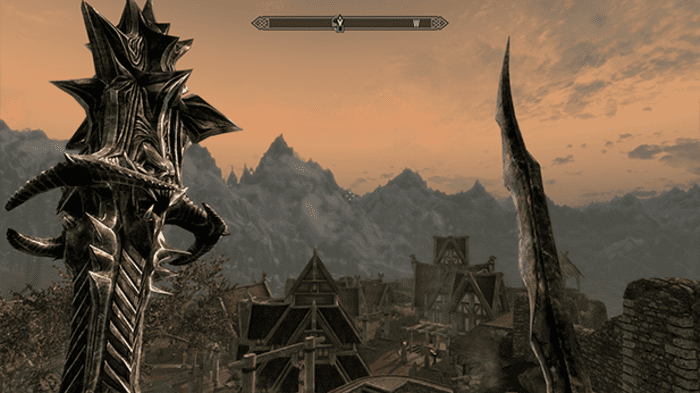
Don’t limit yourself to one weapon type. Carry one of each. Use maces on armored foes, and use a battle-ax when you have poisons available. Pull out a dagger when it’s time to sneak, and dual-wield swords when you’re banking on a critical strike for massive damage!
2. Switch up your elemental damage
Similarly, mages should opt away from specializing in just one type of offensive spell. Fire, frost, and shock all have their time and place, and switching between them will both make combat more visually exciting and keep you alive longer.
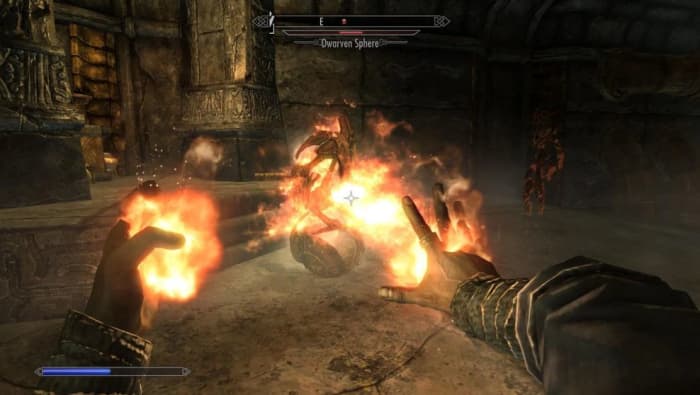
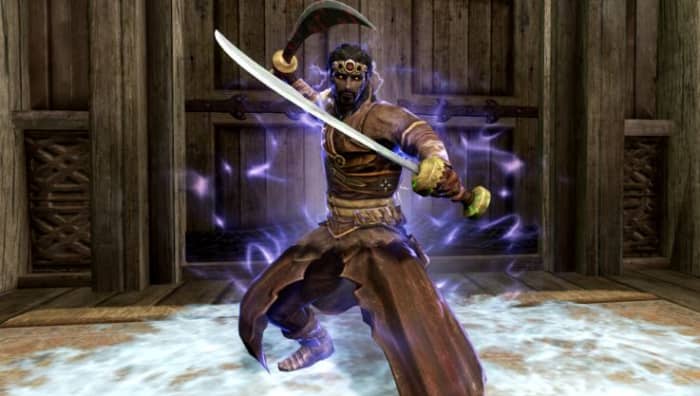
Cloak
The biggest thing to remember about Destruction cloak spells is that they still boast the same elemental effects that we brought up earlier. If you’re playing a warrior, try throwing on a Flame Cloak to increase the damage of your hits! Use a Lightning Cloak to deter mages. A Frost Cloak can sap away the stamina of enemy warriors, leaving them vulnerable to attack and stagger.
Wall
Remember back at the start of the game when all you had was a Flames spell? Wall of Fire is like an upgraded version of that spell. You don’t even have to be directly attacking enemies for Wall spells to wreak havoc on crowds of enemies. Use Frost Wall to deplete the stamina gauge of an entire room. Switch to projectiles or physical attacks while they’re all slowed. Mages who throw up a ward can’t block a Wall of Storms under their feet!
Rune
Runes are rarely used in Skyrim since most combat is initiated before you have much time to plan. The trick with runes is to get the Quiet Casting perk under Illusion. Dual Casting in Destruction means that you can lay down a more powerful trap (which can be placed quite far away with the Rune Master perk) that can catch enemies by surprise, all without them even knowing where you are. Lightning Rune can be an especially good method for sabotaging a mage’s magicka before you even engage them in combat.
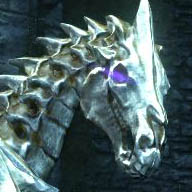
5 mods that completely overhaul The Elder Scrolls V: Skyrim
Read now ►4. Use non-combat trees to enhance your combat
The beauty of Skyrim’s RPG system is that many skill trees work in harmony, benefiting from perks you’ve put into other trees. You can always run a pure thief or warrior, but mixing and matching your talents actually breeds the best results in combat – particularly the more ‘hybrid’ trees like Enchanting or Alchemy. A high skill in Enchanting is essential for virtually any build you can think of, upping the resistances of your armor, augmenting damage, letting you regenerate magicka more quickly, or increasing your thief skills like Pickpocketing or Lockpicking.
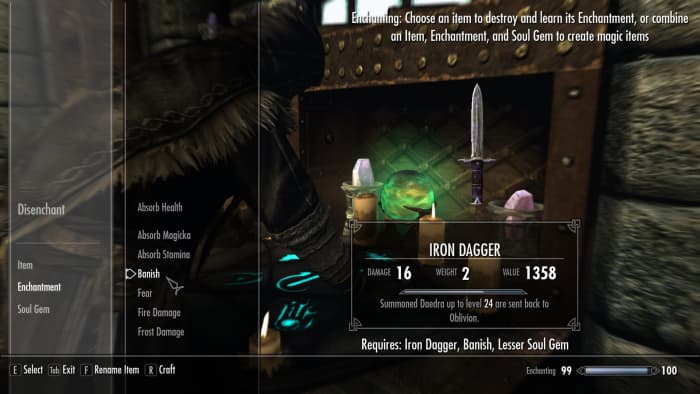
Alchemy is a versatile tool that’s often forgotten. Everyone gulps down health potions when they’re hurt, but what about those typically ignored Frenzy or Aversion potions you can coat your weapons with? Try putting Aversion to Fire on your enchanted fire ax (which does bleed damage), then attacking an enemy with it while barraging them with Flames from your other hand. If you want to get really radical, put away your ultra-damage ebony bow in favor of an old hunting bow that’ll wound instead of kill. Apply a Frenzy potion to the bow and fire a couple of arrows into a group of bandits. Watch them tear each other to pieces!
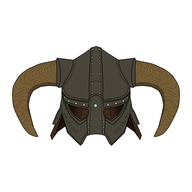
Elder Scrolls 6: What we know so far
How will combat change in Elder Scrolls 6?5. Play out of type
The last tip we have for shaking up your Skyrim experience is to tackle the quests in a different order. Most players start with the Main Quest and the Companions, but what happens if you join the Dark Brotherhood first? If you have DLC installed, what’s the final fight with Alduin like if you’re already a fully-powered Vampire Lord? Or try and get all the Black Books in the Dragonborn DLC before you start the Thieves’ Guild questline to really shake up what’s in your bag of tricks.

The mods you need to play as a bard in Skyrim (and make it look awesome)
Craving a new experience? Play a bard!Playing a race other than your usual can also encourage you to try new approaches to old combat scenarios. If you’re used to playing the hardy Nord, try and mix things up by playing a nimble Khajiit, a powerful High Elf, or an expert Redguard pickpocket who dabbles in illusion. It’s an open world. Stop confining yourself to what’s comfortable!

Ultimate Skyrim guide: Which race is the best?
Which race will you play?If you don’t want to play Skyrim with mods, then changing your approach to combat is probably the best way to avoid repetitive gameplay. The stories and dungeons of Elder Scrolls V may always stay the same, but its RPG elements are whatever you make of them. You’re in control of the archetype you want to run, so try and approach old stories from wholly new angles.
Let us know in the comments below what kind of build you’re going for in your next Skyrim playthrough, and stay in touch for more Elder Scrolls VI information as it becomes available.
(function(d,s,id){var js,fjs=d.getElementsByTagName(s)[0];if(d.getElementById(id))return;js=d.createElement(s);js.id=id;js.src=’https://embed.playbuzz.com/sdk.js’;fjs.parentNode.insertBefore(js,fjs);}(document,’script’,’playbuzz-sdk’));
You may also like
 News
NewsJames Gunn clarifies the future of Harley Quinn after years of being a DC icon
Read more
 News
NewsSouth Korea has grown in streaming much more than expected. They have to thank themselves
Read more
 News
NewsOne of the most controversial (and brave) artists in history will have her own biopic
Read more
 News
NewsWe have been waiting 15 years for the end of one of the best mangas in history. And now, finally, it is going to arrive
Read more
 News
NewsThunderbolts is coming to Disney+ sooner than you thought: This will be the release date on the platform
Read more
 News
NewsFirst look at the highly anticipated series of the world's most famous thief
Read more
